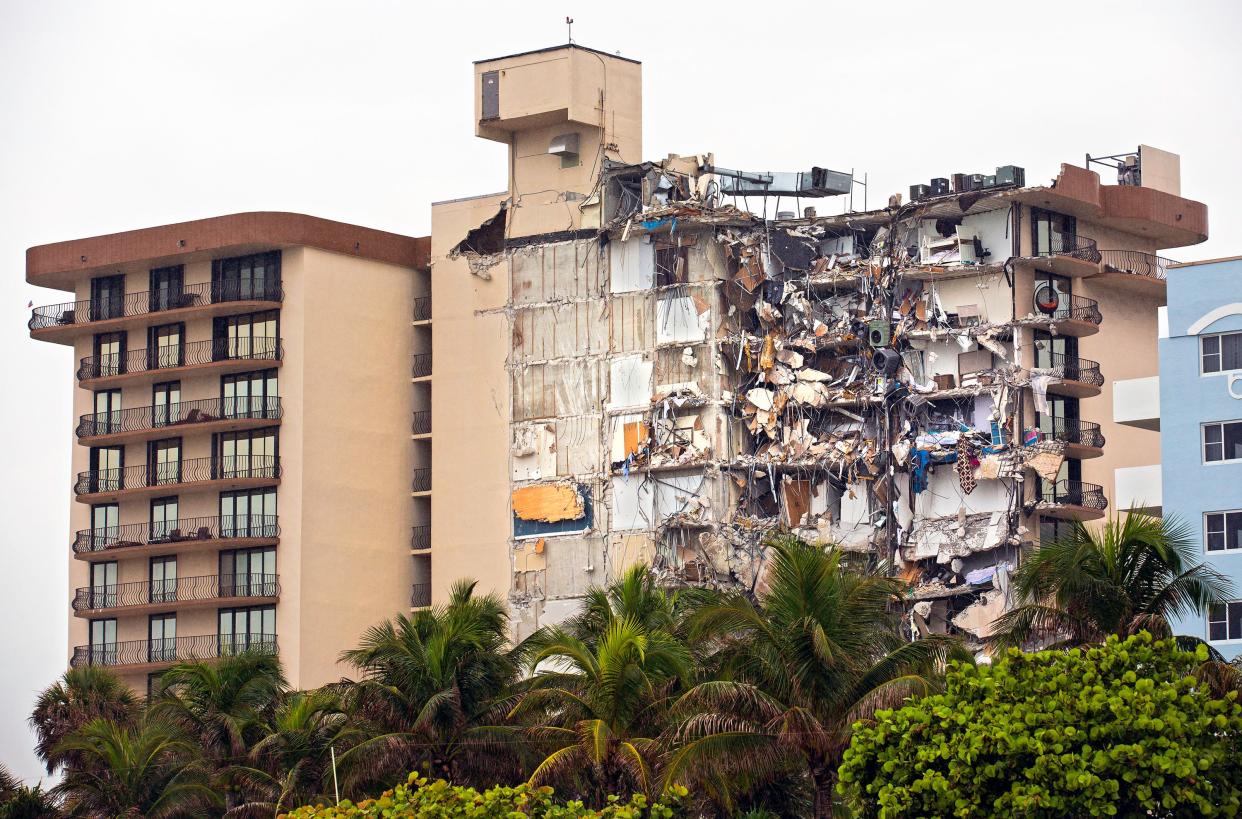Five things to know about our latest Surfside condo collapse investigation

USA TODAY published a major investigation last week about the forces at work at Champlain Towers South, the 12-story condominium in Surfside, Florida, that crumbled to the ground on June 24, killing 98 people and leaving dozens more without a home.
Reporters spent months compiling a complete accounting of the building and the clues leading up to its collapse. They pored over thousands of pages of documents, interviewed dozens of people, and analyzed 40 years of real estate sales in Surfside to track the rise and fall of Champlain’s fortunes, from one of the most expensive in the region to a tarnished bargain.
Here are five key takeaways:
Early condo sales exhibit telltale signs of a money laundering scheme:
The very first sales at Champlain South show red flags that experts say often indicate money laundering. Many of the buyers came from outside the U.S. and they purchased units with LLCs, corporate entities that can hide a buyer's identity. Mortgage loans on a number of properties came from secret or questionable sources. The developer's own attorney used a trust account with an unidentified source of money to shell out more than $3 million in high-interest loans to early buyers at Champlain South in its first two years. Experts told USA TODAY cutting corners on construction often accompanied money laundering. At Champlain South, engineers noted an incorrectly designed pool deck and improperly constructed support columns. Money laundering might have meant that some early buyers weren’t living in the condo building or concerned with its long-term maintenance.
There’s troubling evidence that the building’s decay emerged earlier and was ignored longer than previously known:
Residents noted flooding in the garage in 1981, the year the tower opened. By 1996, according to permits for the work, contractors were making major repairs to the concrete in the garage ceiling, the underbelly of the improperly designed pool deck. In 2001 and 2015, a Champlain resident filed lawsuits against the same concrete contractors, alleging that cracks in the building’s outer skin had allowed water to penetrate into their units. In 2016, as construction rumbled on a new condo next door, a Champlain South resident was shaken off a treadmill.
Many of these problems were addressed in isolation and not as a major problem that could lead to collapse:
Issues like flooding, chipping concrete and vibrations were seen as a series of seemingly small issues that, for decades, nobody connected to the larger, more devastating problem. It wasn’t until 2018, when an engineering report laid out construction errors that investigators are examining to determine if they contributed to the collapse.
Condo residents delayed repairs even after warnings of major structural issues:
Even when engineers finally alerted residents to design flaws that were causing chronic water intrusion and growing damage to concrete, the arguments and delays over needed repairs did not focus on safety but about the cost and inconvenience of fixing the problems: During the building’s final years, homeowners voted to delay a repair of "deep" concrete deterioration near the pool, so they could keep it open through the summer, a 2020 engineering document shows. It was the first part of the building that caved, witnesses said.
As building maintenance was deferred and problems continued to crop up, the condo’s luxury designs and high-end finishes became dingy and dilapidated:
People looking for top-tier beachfront living in Surfside went to the newer places next door. Champlain South’s biggest sale in 2021 came in May when a couple paid $2.8 million for a four-bedroom penthouse in the 40-year-old building. By contrast, a three-bedroom at the 2-year-old Eighty Seven Park condos next door sold for $9 million, more than three times as much.
To understand how the building declined and fell from its inception, "timing is key," said Nicholas Griffin, who wrote a book exploring cocaine, the race riots and refugee crisis in Miami in 1980.
“This is all going on at exactly the time they are putting together the Surfside deal,” Griffin said. “So you can imagine how far down the bottom of the list honest inspections of potential building disasters would be.”
He paused.
“Seeds were planted that took 40 years to grow and then collapse.”
Read the full investigation – Left to rot: Collapsed condo born of botched construction and evidence of money laundering
This article originally appeared on USA TODAY: Surfside condo collapse: Takeaways from our latest investigation

 Yahoo Movies
Yahoo Movies 
